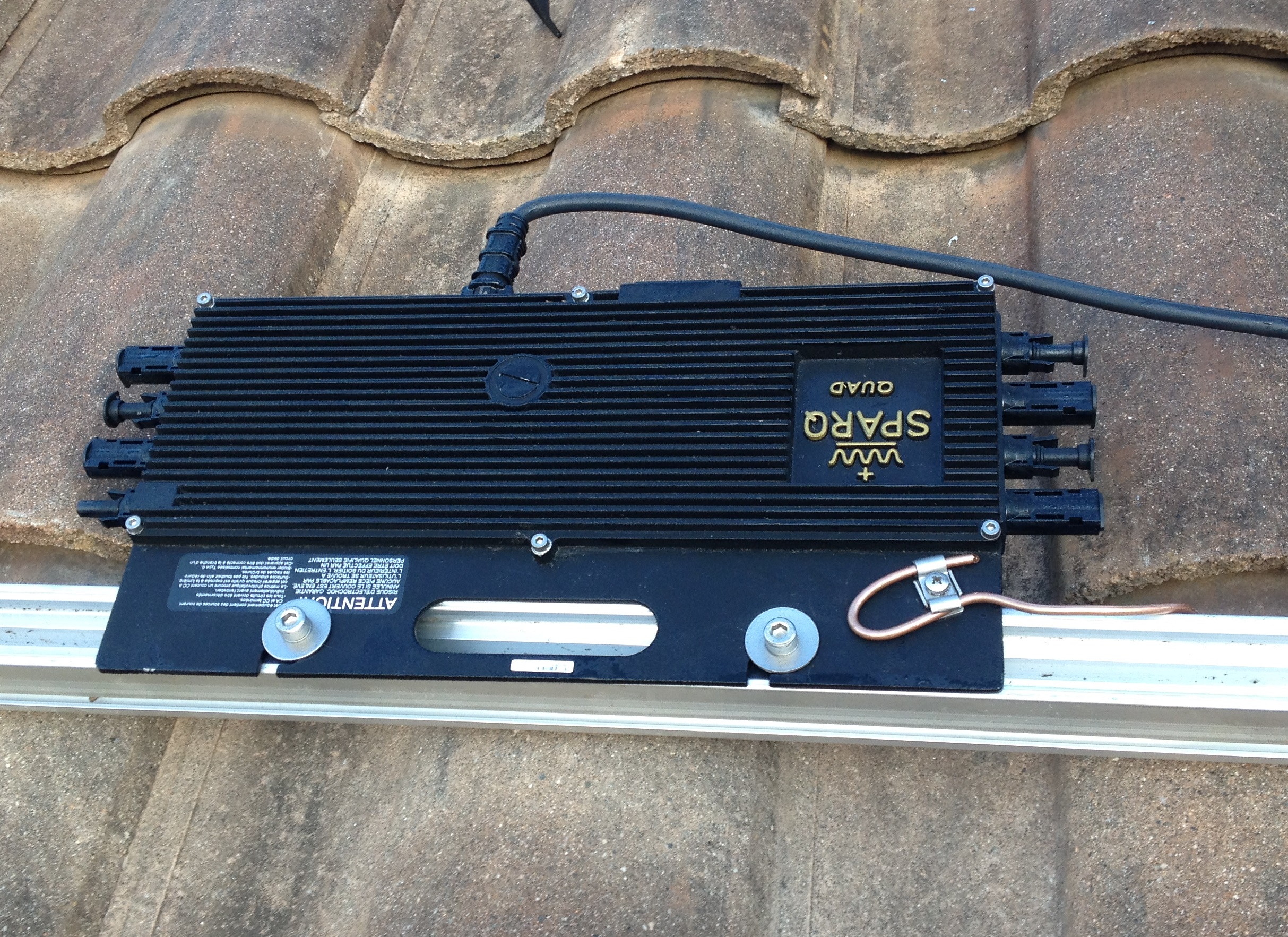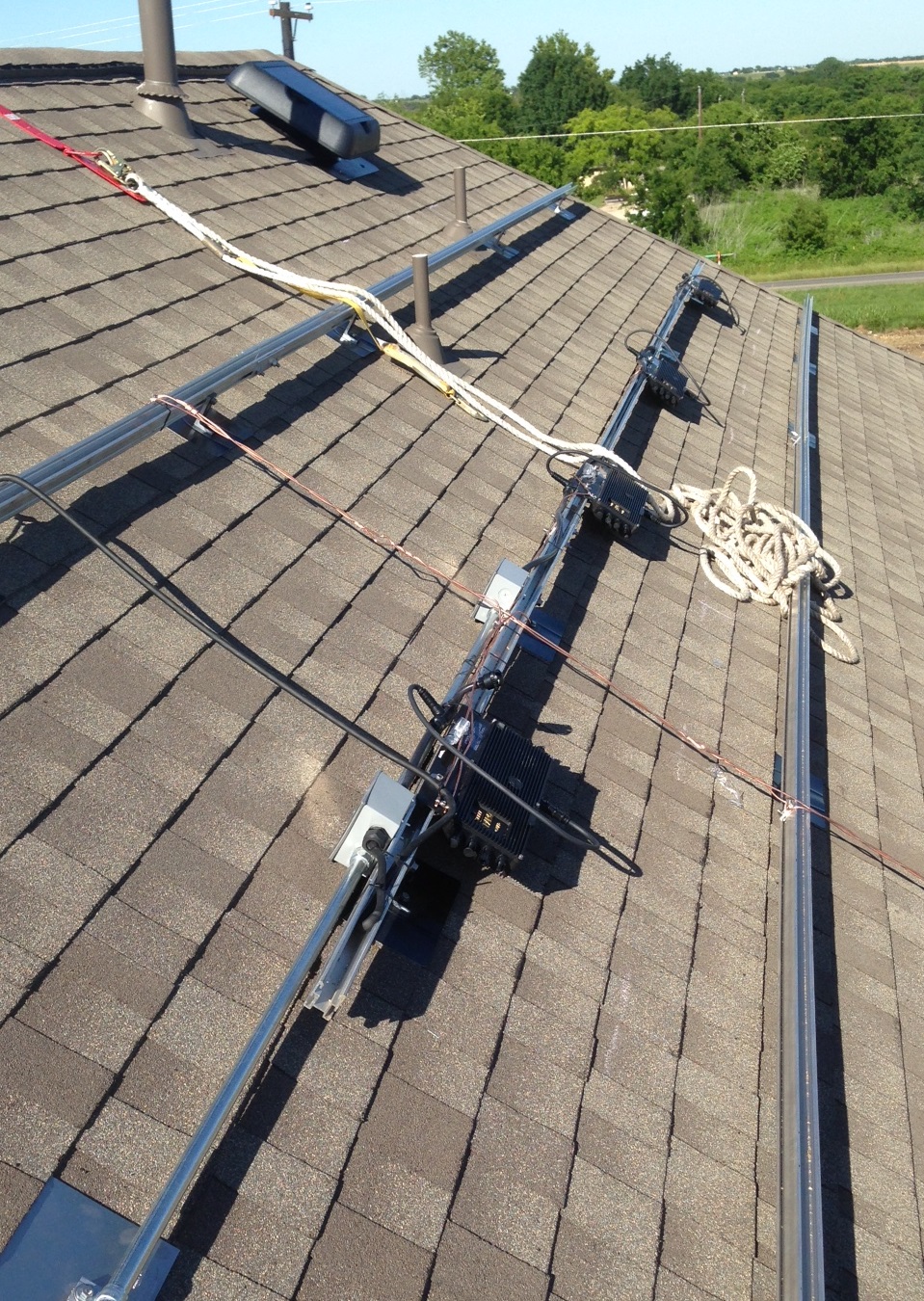




















Central inverters have dominated the solar industry since its inception. The introduction of micro-inverters marks one of the biggest technology shifts in the PV industry to date. Manufacturers are touting 5-25% increase in power output, which in the long run can bring in a lot in savings for many homeowners. A solar micro-inverter, converts direct current (DC) electricity from a single solar panel to alternating current (AC). The electric power from several micro-inverters is combined and fed into an existing electrical grid. Micro-inverters contrast with conventional string or central inverter devices, which are connected to multiple solar panels. Patented digital controls are smart and reliable, contributing to grid stability. And our durable components – free of electrolytic capacitors - withstand the tests of time and weather.
There are some situations in which micro-inverter makes sense.
What is a Micro-Inverter? – Since your solar panels generate DC (direct current), we need some kind of device to convert DC intto AC (alternating current), in order to power your electrical appliances (without burning down your house!). This is where the solar inverter comes in. Inverters also enable us to switch off all electrical current in the case of a blackout or if repair is needed. This is of course also useful for maintenance, troubleshooting and system upgrade as well. One central (string) inverter would normally cover an entire residential solar system (assuming that the central inverter is strong enough for your entire array). Micro-inverters, on the other hand, sit on the back of each and every solar panel.
Benefit - Individual Optimization – Micro-inverters optimizes for each solar panel alone, not for your entire solar system, as central inverts do. This enables every solar panel to perform at their maximum potential. In other words, one solar panel alone cannot drag down the performance of entire solar array, as opposed to central inverters that optimize for the weakest link. If one solar panel in a string had abnormally high resistance due to a manufacturing defect, the performance of every solar panel connected to that same central inverter would suffer. Likewise, coverage issues such as shading, dirt, snow and even slight orientation mismatch on one of the solar panels would not bring the entire solar system down. Shading of as little as 9% of a solar system connected to a central inverter, can lead to a system-wide decline in power output with as much as 54%.
Benefit - Maximum Power Point Tracking (MPPT) – One of the tricky things about solar cells is that voltage needs to be adjusted to light level for maximum output of power. In other words, the performance of a solar panel is dependent on the voltage load that is applied from the inverter. MPPT is a technique used to find the right voltage – the maximum power point. When MPPT is applied to each individual panel, as opposed to the solar system as a whole, performance will naturally increase.
Benefit - Longer Warranty - Since micro-inverters are not exposed to as high power and heat loads as central inverter, they also tend to last significantly longer. Micro-inverters typically come with a warranty of 20-25 years – 10-15 years longer than central inverters.
Benefit - Easily Expandable - Expanding your solar system with more solar panels later on is easier with micro-inverters. You don’t have to worry about restringing or getting a second central inverter installed. Central inverters come in limited sizes – you might end up having to pay for one that is much bigger than what you actually need.
Benefit - No Single Point of Failure - Unlike central inverters, if there is something wrong with either one of the solar panels or the micro-inverter that sits on the back of it, the rest of the solar system is unaffected and still up and running.
Benefit - Improved Safety - Solar panels are connected in series before they are fed into a central inverter, typically with an effective nominal rating of 300-600 VDC (volts of direct current). This current is potentially life threatening. Micro-inverters eliminate the need for high voltage DC wiring, which improve the safety for both solar installers and system owners.
Benefit - Silent - Since micro-inverters dissipate significantly less heat than central inverters do, there is no need for active cooling, which enables them to operate without noise.
* TEN WAYS TO REVERSE CLIMATE CHANGE <-- Read More .....

Read more .... Batteries Storage Systems.